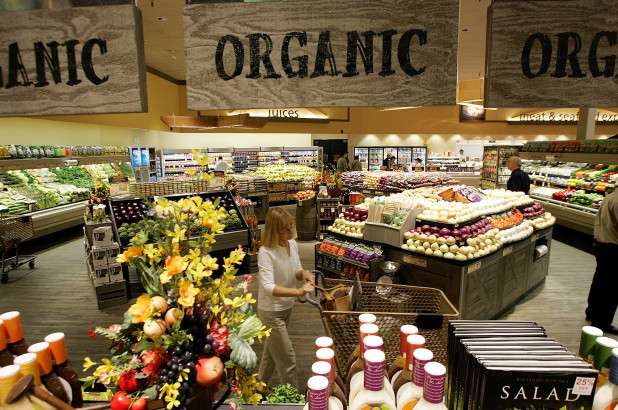建造更多的杂货店有助于应对气候变化
研究表明,建造更多的杂货店有助于应对气候变化
Boosting the number of grocery stores in a city could help cut down on food waste and mitigate the harmful effects of climate change, a new study suggests — all while reducing households’ grocery expenses.
一项新的研究表明,增加一个城市的杂货店数量有助于减少食物浪费,减轻气候变化的有害影响——同时减少家庭的杂货支出。
The study, published in the journal Manufacturing & Service Operations Management, developed a model using US Census Bureau, grocery industry and academic study data. Author Elena Belavina, an associate professor at Cornell University’s S.C. Johnson College of Business, found that increasing grocery-store density reduces consumer waste by improving grocery access.
这项研究发表在《制造与服务运营管理》(Manufacturing&Service Operations Management)杂志上,利用美国人口普查局(US Census Bureau)、食品杂货业和学术研究数据开发了一个模型。作者、康奈尔大学约翰逊商学院(Cornell University's.C.Johnson College of Business)副教授埃琳娜·贝拉维娜(Elena Belavina)发现,增加杂货店密度可以通过改善杂货店的准入减少消费者的浪费。
When grocery stores are more abundant, they’re closer to you and you end up visiting the store more frequently, Belavina said in a video explaining her research — “and as a result, you buy less.” “Very small increases in store density can have a very high impact,” she said.
贝拉维娜在一段视频中解释她的研究时说,当杂货店越丰富,它们离你越近,你就会更频繁地光顾商店——“结果,你买的东西就少了。”她说:“商店密度的很小的增长都会产生很大的影响。”

In Chicago, for example, three to four additional stores per 10 square kilometers could produce a 6 percent to 9 percent decrease in food waste, the study found. It could also result in a 1 percent to 4 percent drop in household grocery expenses due to factors like lower waste, prices and travel. This food-waste decrease “would be equivalent to converting over 20,000 cars from fossil fuel to electric power-trains,” Belavina estimated.
以芝加哥为例,研究发现,每10平方公里增加3至4家商店,可减少6%至9%的食品浪费。这也可能导致家庭食品杂货支出下降1%至4%,原因是浪费、价格和旅行减少。Belavina估计,减少食物浪费“相当于将超过20000辆汽车从化石燃料转换成电力列车”。
“It’s a big win for the environment,” she said, “and a big win for consumers.”
她说:“这对环境来说是一个巨大的胜利,对消费者来说也是一个巨大的胜利。”
Around a third of food produced globally is wasted or lost, concluded a report last year by the Intergovernmental Panel on Climate Change (IPCC). Up to 40 percent of food in the US goes uneaten, according to the Natural Resources Defense Council, which cites research estimating that food waste fuels at least 2.6 percent of the country’s annual greenhouse gas emissions.
政府间气候变化专门委员会(IPCC)去年的一份报告指出,全球生产的食品中约有三分之一被浪费或丢失。根据美国自然资源保护委员会(Natural Resources Defense Council)的数据,美国多达40%的食物没有被食用。该委员会援引的研究估计,食物垃圾燃料至少占美国每年温室气体排放的2.6%。
Reducing food waste and loss “would bring a range of benefits for health, reducing pressures on land, water and nutrients, lowering emissions and safeguarding food security,” the IPCC report said. “Reducing food waste by 50 percent would generate net emissions reductions in the range of 20 to 30 percent of total food-sourced [greenhouse gases].”
IPCC的报告说,减少食物浪费和损失“将为健康带来一系列好处,减少对土地、水和养分的压力,减少排放,保障粮食安全”。“减少50%的食物浪费将产生20%到30%的食物来源(温室气体)的净减排。”
Greater store density reduced food waste up to a certain threshold, after which a greater number of grocery stores resulted in higher food waste, the study found. But most American cities’ grocery-store density sits “well below” the optimal level, Belavina wrote, meaning that “modest increases in-store density substantially reduce waste” in most cities — including Chicago, Denver and Los Angeles.
研究发现,商店密度越大,食物浪费就越少,达到一定的临界值后,杂货店数量越多,食物浪费就越高。但大多数美国城市的杂货店密度“远低于”最佳水平,贝拉维娜写道,这意味着在大多数城市,包括芝加哥、丹佛和洛杉矶,“商店密度的适度增加大大减少了浪费”。
In places like Manhattan, meanwhile, the impact was less noticeable because its grocery-store density was close to being optimal, the study found.
与此同时,研究发现,在曼哈顿等地,这种影响不那么明显,因为那里的杂货店密度接近最佳水平。


















